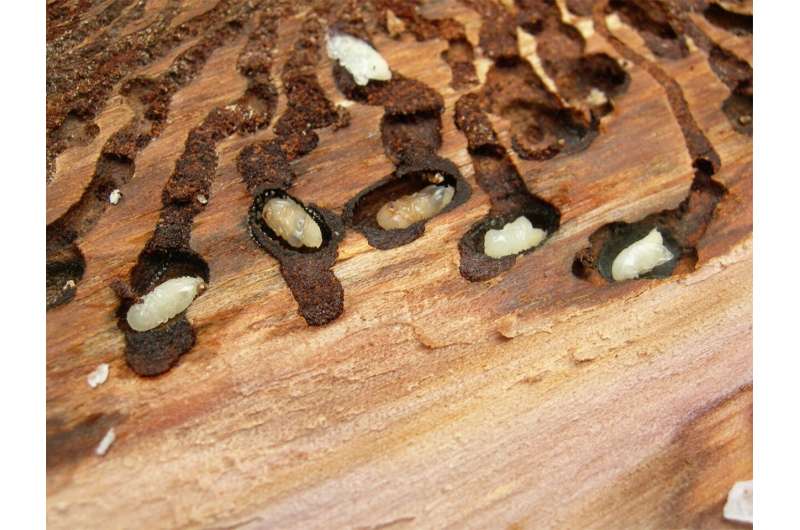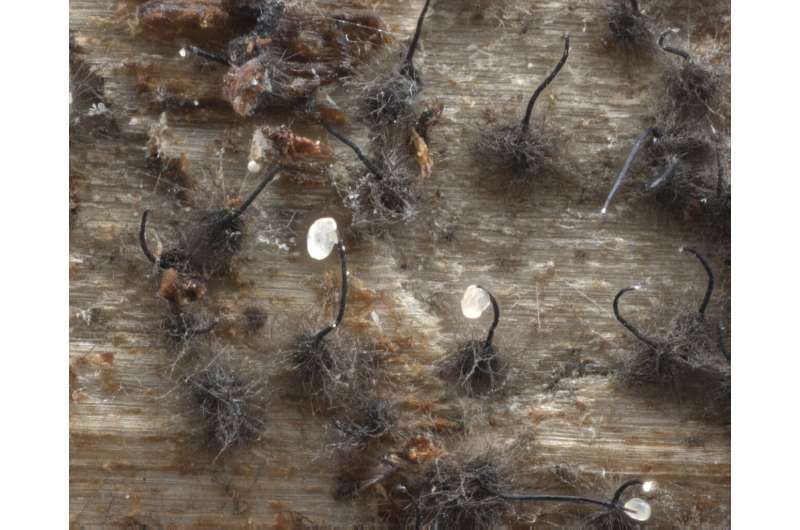This article has been reviewed according to Science X's editorial process and policies. Editors have highlighted the following attributes while ensuring the content's credibility:
fact-checked
peer-reviewed publication
trusted source
proofread
Conifer-killing beetles use smell of beneficial fungus to select host trees

Eurasian spruce bark beetles (Ips typographus) burrow into the bark of Norway spruce (Picea abies) trees where they mate and lay their eggs. Major outbreaks in Europe have decimated millions of hectares of conifer forests. The beetles preferentially attack trees that are already infected with symbiotic fungi (such as Grosmannia penicillata), which is thought to weaken host trees and break down their chemical defenses, allowing the beetles to successfully develop in the bark.
To investigate the chemical signals that the beetles use to identify host trees infected with the fungus, the researchers performed a series of laboratory experiments on captive bark beetles and samples of Norway spruce bark. They found that the fungus breaks down chemicals in tree bark resin, known as monoterpenes, into new compounds, including camphor and thujanol.
After 12 days of infection, these fungus-produced compounds dominated the chemical mixture emitted by bark samples. Single cell recordings of sensory neurons in the beetles' antennae showed that they can detect camphor and thujanol, and in behavioral experiments, bark beetles were attracted to bark containing the fungus-produced compounds.

Tree-resin derived compounds produced by the fungus may allow bark beetles to assess the presence of their symbiont, helping them to identify suitable sites for feeding and breeding. The authors say that understanding the role of these compounds in bark beetle attacks could be useful for pest-management strategies to protect European conifers from epidemic outbreaks.
Gershenzon adds, "The bark beetles currently killing millions of spruce trees every year in Europe are supported in their attacks by fungal associates. We discovered that these fungi convert volatile compounds from spruce resin to products, which may serve as cues for bark beetles to find them."
The study is published in the journal PLoS Biology.
More information: Kandasamy D. et al, Conifer-killing bark beetles locate fungal symbionts by detecting volatile fungal metabolites of host tree resin monoterpenes, PLoS Biology (2023). DOI: 10.1371/journal.pbio.3001887
Journal information: PLoS Biology
Provided by Public Library of Science




















